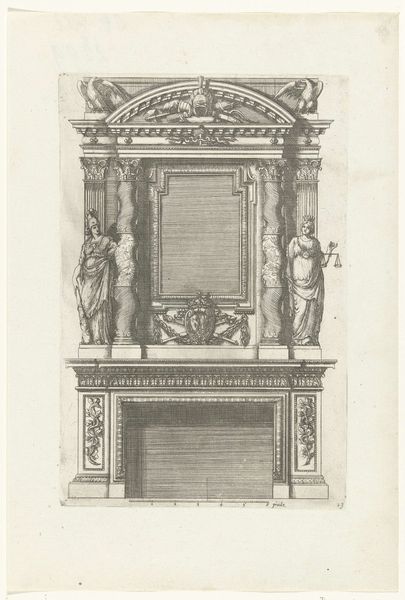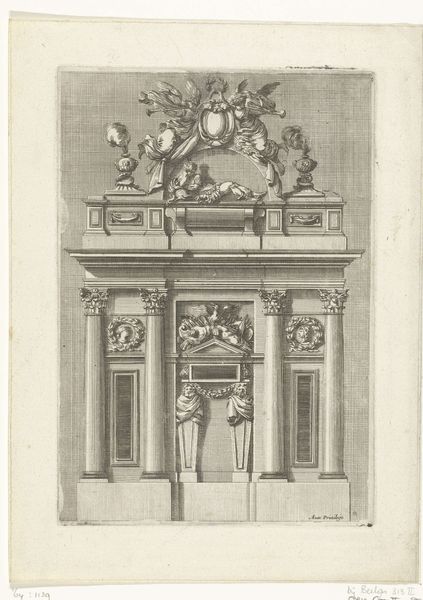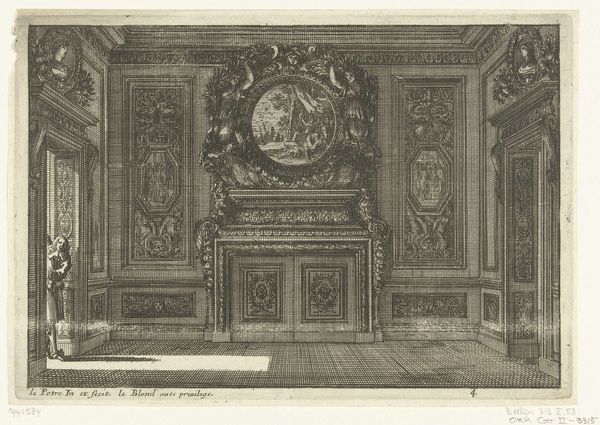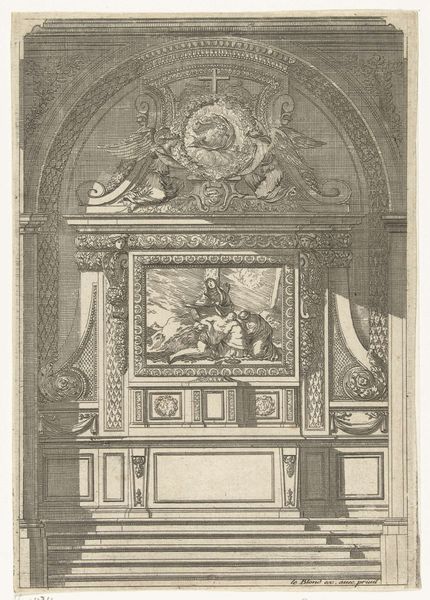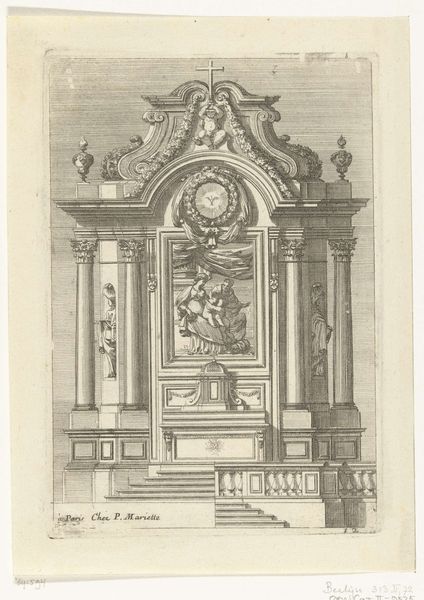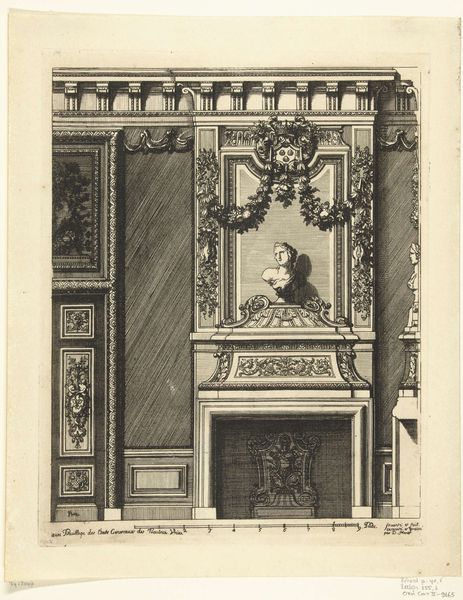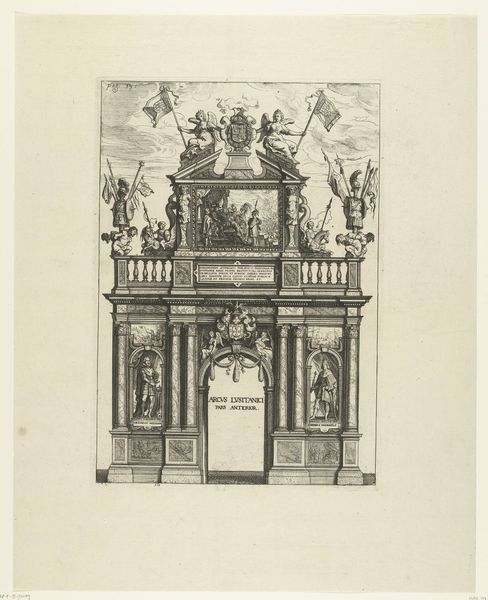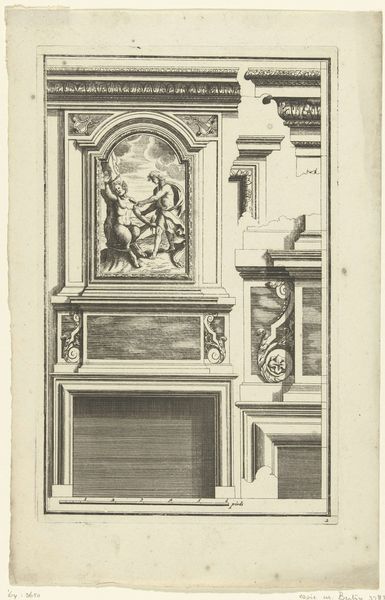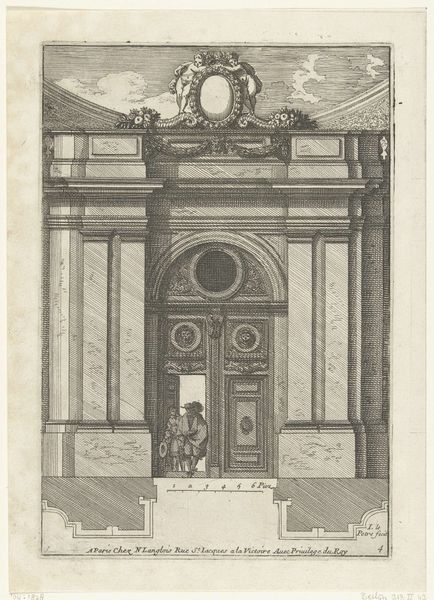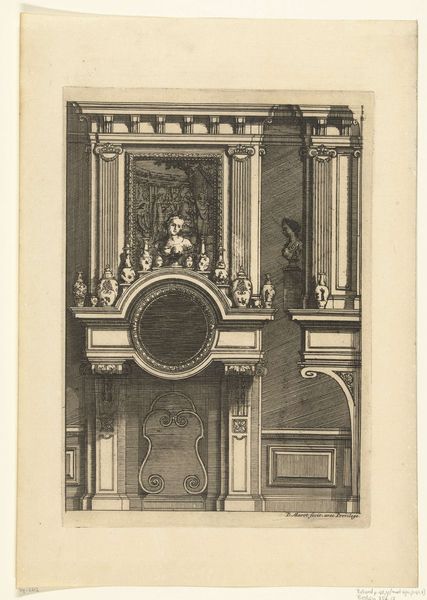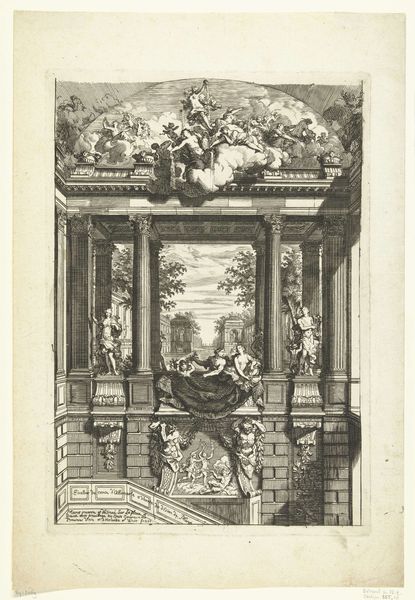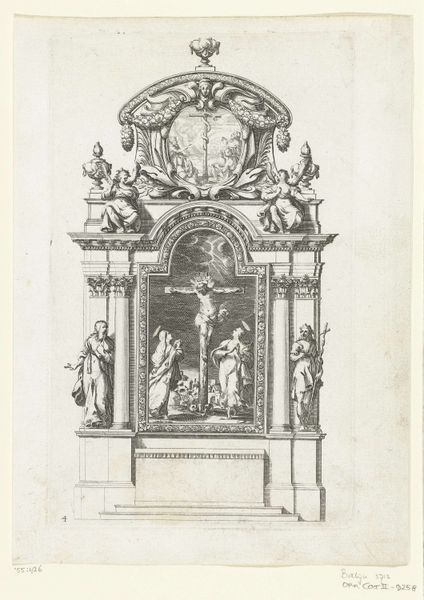
print, engraving
#
baroque
# print
#
history-painting
#
engraving
Dimensions: height 199 mm, width 138 mm
Copyright: Rijks Museum: Open Domain
This print of a tabernacle with the ascension of Mary was made by Jean Lepautre, sometime in the 17th century. It’s made using etching, a printmaking technique where acid is used to corrode the unprotected parts of a metal surface to create a design in intaglio. The material qualities of the print, its lines and tonality, determine the image's appearance, yet also reflect something of the cultural moment in which it was made. Etching was a key technology for disseminating images at this time, when the flow of visual information was a major factor in early globalization. Lepautre and his contemporaries were effectively part of a media industry. Consider too the labor involved: the skilled hand of the etcher, the production of acid, the processing of paper, and the distribution networks that carried prints far and wide. Reflecting on these aspects of materials, making, and context helps us fully appreciate the social life of this artwork, expanding our understanding of 17th-century visual culture beyond the confines of traditional art history.
Comments
No comments
Be the first to comment and join the conversation on the ultimate creative platform.
